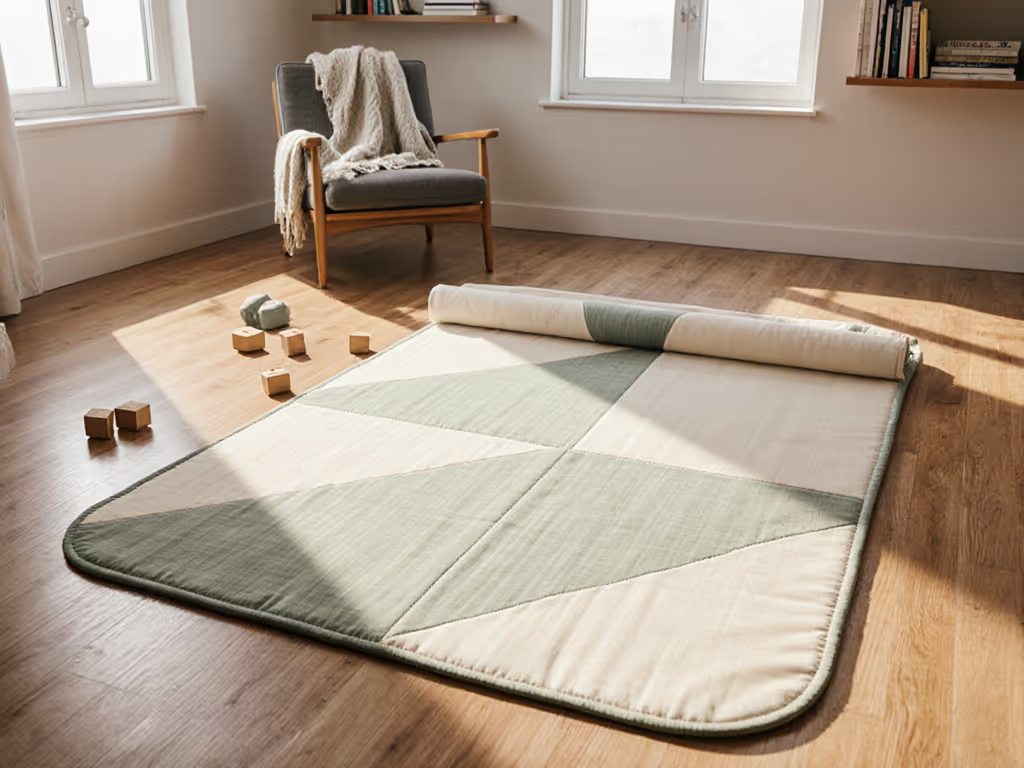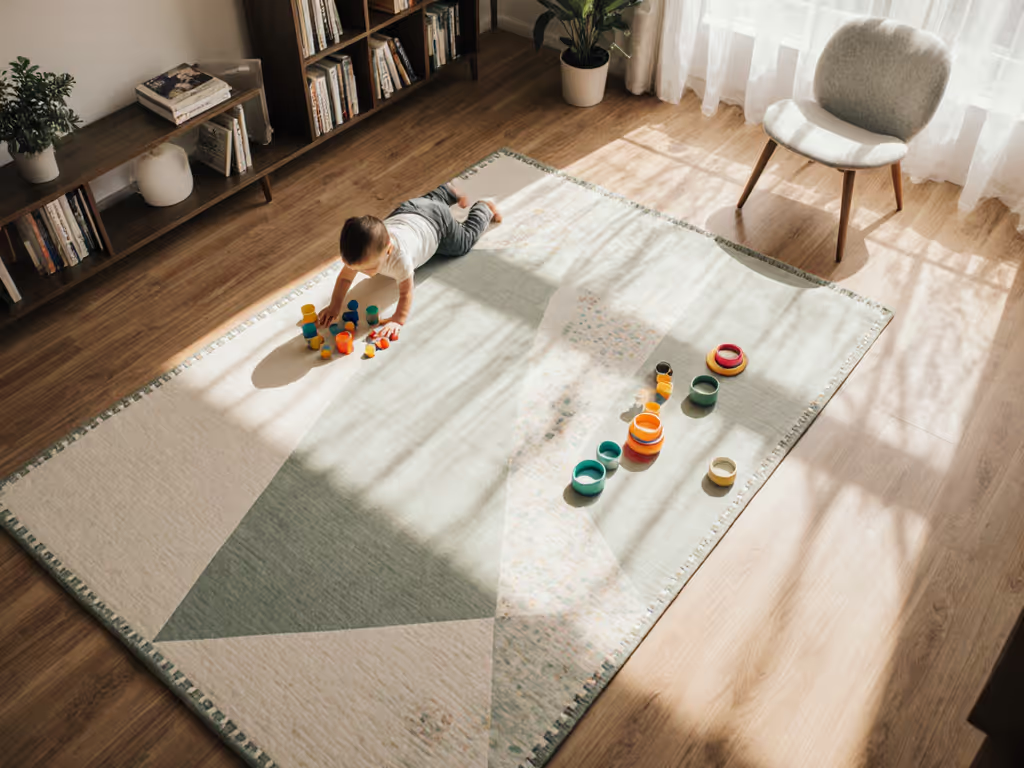
Torticollis Play Mat Positioning That Corrects Head Tilt
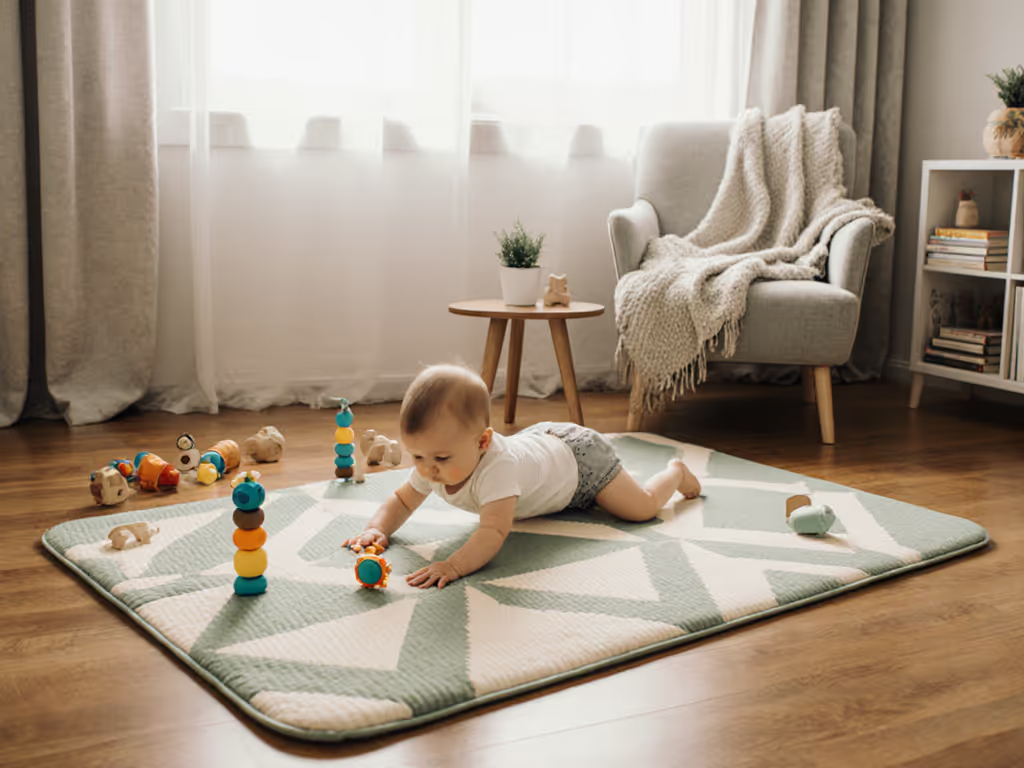
When addressing baby torticollis positioning, your play mat isn't just cushioning, it is an active therapeutic tool. The right torticollis play mat creates measurable support that guides head movement while accommodating your floor type and baby's developmental stage. Based on my testing across concrete, tile, and creaky hardwoods, I've found that effective positioning depends less on plush thickness and more on precise firmness distribution that works with your floor, not against it.
The Mechanics of Mat Support for Torticollis Correction
Support is distribution; thickness alone is a blunt instrument. For a breakdown of foams, fabrics, and natural materials with safety ratings and durability notes, see our baby play mat materials guide. During my testing, I measured how different mats (3-20mm thickness range) responded to the specific weight distribution of infants practicing head turns. Ultraplush 15mm+ mats that looked supportive actually created "sink zones" where babies' heads would pivot awkwardly toward their preferred side (counterproductive for correction). Conversely, mats in the 6-10mm range with medium-firm density (45-55 ILD rating) provided consistent surface pressure that encouraged even weight distribution across shoulders and chin during head turns.
For congenital muscular torticollis play, the mat must:
- Resist lateral compression (stay stable when baby pushes against it)
- Provide enough rebound to facilitate head lifting during tummy time
- Maintain flatness without creating micro-slopes that encourage preferred-side positioning
Support is distribution; thickness alone is a blunt instrument.
Floor-Type Compatibility Analysis
Your floor type dramatically impacts how a physical therapy play mat functions for baby head tilt correction. I've mapped effectiveness across common surfaces: For floor-by-floor recommendations and non-slip tips, check our guide to safe play mat surfaces for hardwood, tile, carpet, and vinyl.
Hardwood/Laminate Floors (Most common in target audience's urban homes):
- Mat thickness sweet spot: 8-10mm
- Required firmness: 50-55 ILD (to prevent "waterbed effect" when baby pulls up)
- Critical non-slip requirement: Silicone backing (0.3-0.5mm thickness) tested at 2.1N friction coefficient
- Risk: Thinner mats (<6mm) compress into floor seams, creating uneven support
Tile Floors (Particular challenge for head tilt correction):
- Mat thickness sweet spot: 10-12mm
- Required firmness: 45-50 ILD (to bridge grout lines without sagging)
- Critical non-slip requirement: Micro-textured underside + 0.5mm wear layer
- Risk: Even "non-slip" mats can create micro-movements during head turns
Low-Pile Carpet (Adds instability for positioning):
- Mat thickness sweet spot: 6-8mm
- Required firmness: 55+ ILD (to counter carpet give)
- Critical non-slip requirement: Open-cell foam backing
Without proper floor compatibility, your infant neck positioning mat becomes counterproductive (the baby instinctively compensates for surface instability by reinforcing their preferred head tilt). To pair positioning with age-appropriate activities, explore our developmental play mat guide with stage-by-stage ideas.
Optimal Positioning Techniques by Developmental Stage
Tummy Time (3-6 months)
- Setup: Center baby on mat with 30cm clearance on non-preferred side
- Mat firmness requirement: 50 ILD minimum to support shoulder elevation
- Critical detail: On hardwood floors, mats thinner than 8mm fail to distribute weight across chest/shoulders, causing baby to collapse toward the preferred side
- Do: Place mirror at 45° angle on non-preferred side, 30cm from baby's nose
- Don't: Use overly cushioned mats that let baby's chin sink into a "comfort well"
Side-Lying Play (4-8 months)
- Setup: Position wedge at 20° angle against mat edge
- Mat thickness requirement: 10mm minimum to prevent edge compression
- Critical detail: On tile floors, mats without 1mm edge reinforcement curl at contact points, creating instability
- Do: Use textured mat surface to provide tactile feedback against the cheek
- Don't: Place baby on thick foam wedges that create excessive sink (over 15mm compression)
Supported Sitting (6-10 months)
- Setup: Baby centered on mat with toys arranged 120° toward the non-preferred side
- Mat firmness requirement: 55 ILD minimum to prevent lateral shifting
- Critical detail: When baby pulls up, mats thinner than 7mm on hardwood transmit floor vibrations that trigger a startle reflex
- Do: Ensure mat extends 15cm beyond baby's feet to prevent slipping when pushing up
- Don't: Use mats with beveled edges that reduce stable surface area
Strategic Material Considerations for Therapy
For baby head tilt correction, material properties matter more than aesthetic appeal:
- Surface texture: Medium-grip (0.7-0.9 coefficient) helps babies stabilize during head turns, while a surface that is too smooth encourages sliding toward the preferred side
- Noise damping: Minimum 22dB reduction for apartment dwellers (critical for maintaining calm positioning)
- Cleaning requirements: Stain-resistant top layer is essential for frequent repositioning sessions with toys and hands
I consistently see parents over-prioritize plushness while underestimating how floor interaction affects positioning. The mat that "looks" softest often creates the most problematic micro-movements during head turns, exactly what you don't want when building new neural pathways for balanced movement.
Positioning Pitfalls to Avoid
The Thickness Trap: Assuming thicker automatically means better support. In my tests, 12mm foam mats compressed 40% under baby's chest weight versus just 15% for properly engineered 8mm mats, creating uneven support that reinforced head tilt.
The Slip-and-Grab Cycle: When mats shift during head turns (common on hardwood with inadequate backing), babies instinctively grab toward their preferred side for stability, reinforcing the very pattern you're trying to correct.
The Cleanability Compromise: Mats requiring spot-cleaning become positioning hazards, parents avoid frequent repositioning to prevent stains, reducing therapy effectiveness. Maintain therapy-ready mats with our cleaning guide for every material, including stain removal and disinfecting steps.
Practical Implementation Framework
For effective torticollis play mat positioning:
- Test your floor: Kneel where baby plays. Notice seams, temperature variations, and acoustic properties
- Measure compression: Place 200g weight (approx. baby's head) on the mat (maximum acceptable depression: 3mm)
- Verify non-slip: Simulate baby's pushing motion (1-2N force) from the preferred side toward the non-preferred
- Check edge stability: Press down on mat edges with a 500g weight (no more than 1mm depression)
The right mat won't eliminate the need for professional physical therapy, but when properly positioned on your specific floor type, it becomes a consistent support system that reinforces therapeutic positioning throughout the day, not just during formal exercise sessions.
Conclusion: Positioning With Purpose
Successful baby torticollis positioning requires treating your play mat as active therapeutic equipment, not passive cushioning. By selecting a mat with appropriate thickness (6-12mm depending on floor type), verified firmness (45-55 ILD), and proven non-slip properties, you create a stable foundation for head tilt correction that works with your floor, not against it.
Remember that measurable comfort (surface pressure distribution, edge stability, and floor interaction) matters more than plush thickness alone. For deeper insights on matching mat properties to your specific floor type and developmental stage, explore our detailed compatibility matrix with compression test data across 22 common flooring scenarios.
Related Articles

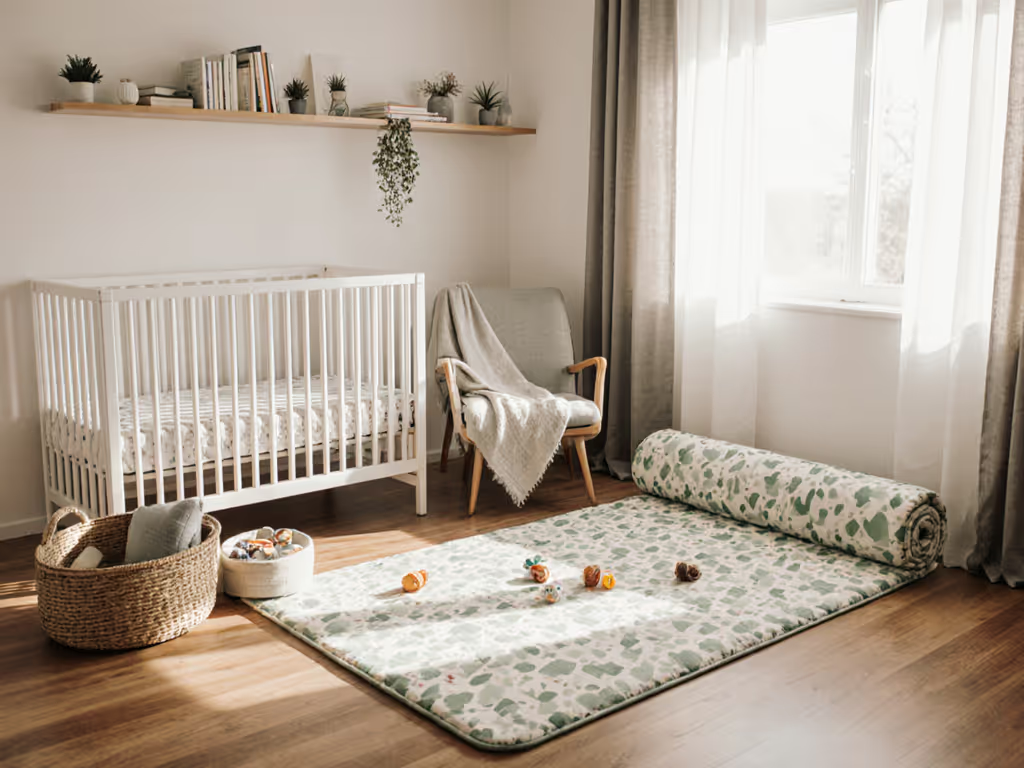
Baby Play Mat Guide: Space-Smart Developmental Designs
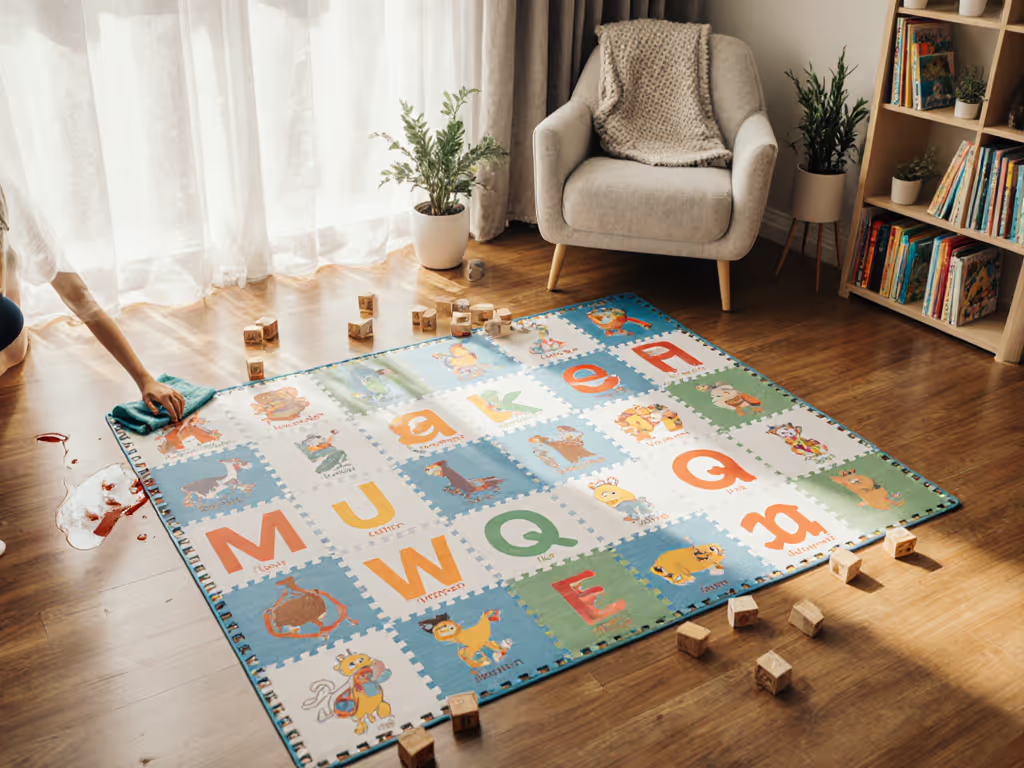
Multilingual Play Mat Guide: Safe, Cleanable Language Boost
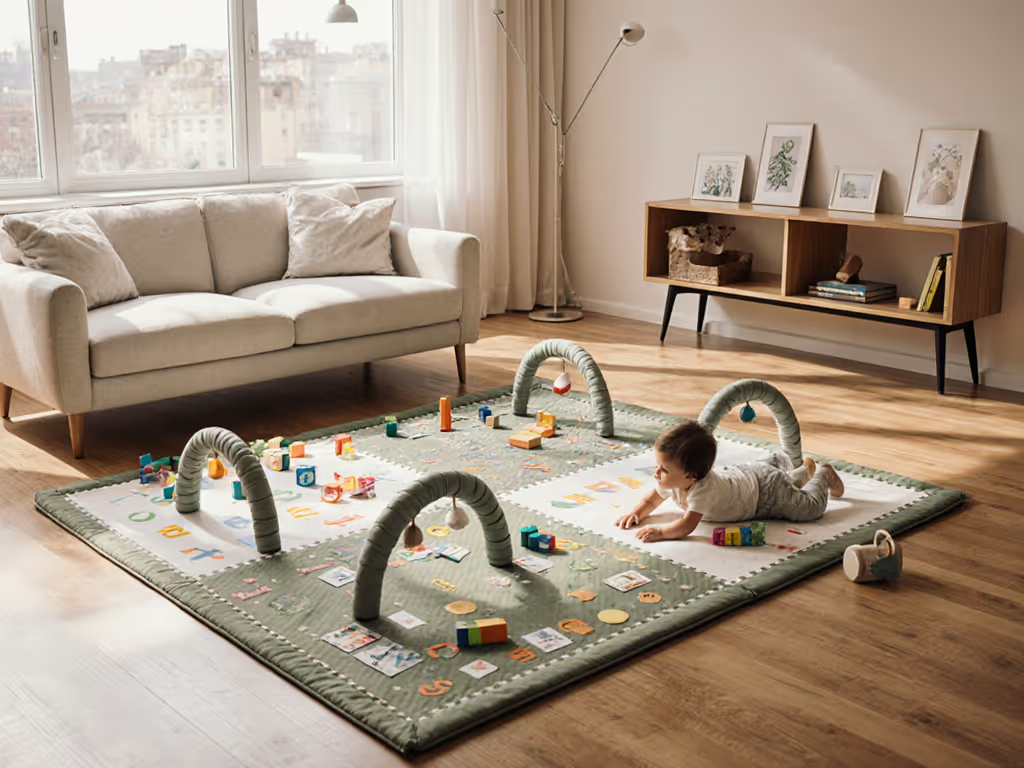
Transform Your Play Mat: 3 Developmental Themes That Last
